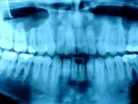Woman receives 3D printed jaw in pioneering transplant

Surgeons in the Netherlands are claiming to have carried out the world’s first entire jaw transplant, replacing a patient’s original jaw with one made via 3D printing technology.
Apparently the pioneering operation was carried out in June last year on an 83-year-old woman with a severe bone infection in her lower mandible.
The doctors worked in partnership with metal parts manufacturer LayerWise, who manufactured the 3D printed jaw by fusing layers of titanium powder together one layer at a time.
There are now hopes this could be the start of using 3D technology to create patient-specific limbs and body parts for transplants.
To read the latest edition of Healthcare Global, click here
- Almost $800m donated to fight ignored tropical diseases
- Number of pensioners with STIs doubles in 10 years
- New online test assesses patient’s asthma attack risk
Doctors felt that given the patient’s age, traditional reconstructive surgery carried too many risks and instead decided that fitting her with a tailor-made jaw was the safest option.
After it was designed, the printing process only took a few hours and doctors were able to carry out the transplant in a fifth of the time of normal reconstructive surgery, in just four hours.
The team of surgeons hailed the transplant as a success and the day after the operation was carried out the lady was able to speak and swallow normally.
The woman was deemed well enough to return home after spending four days in hospital.
Speaking to BBC News, the medical applications engineer from LayerWise, Ruben Wauthle, said: “Once we received the 3D digital design, the part was split up automatically into 2D layers and then we sent those cross sections to the printing machine.
“It used a laser beam to melt successive thin layers of titanium powder together to build the part.”
Wauthle added: “This was repeated with each cross section melted to the previous layer. It took 33 layers to build 1mm of height, so you can imagine there were many thousand layers necessary to build this jawbone.”
BBC Newsalso quoted Dr Jules Poukens, the leader of the surgical team. Poukens said: “Shortly after waking up from the anaesthetics the patient spoke a few words, and the day after the patient was able to swallow again.
“The new treatment is a world premiere because it concerns the first patient-specific implant in replacement of the entire lower jaw.”
Meanwhile, Wauthle told the news service that using 3D printing technology in a healthcare setting could lead to financial savings.
“The advantages are that the surgery time decreases because the implants perfectly fit the patients and hospitalisation time also lowers - all reducing medical costs.”
The Healthcare Global magazine is now available on the iPad. Click here to download it.



